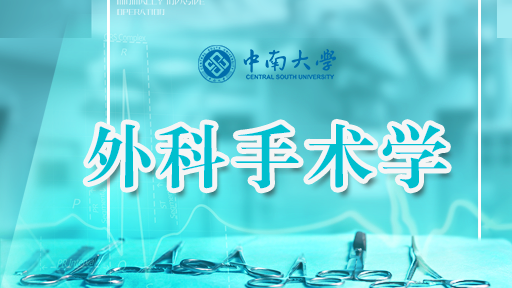
当前课程知识点:Production Engineering > Chapter 6 Sucker Rod Pumping(I) > 6.1 Introduction of Surface and Downhole Equipment > 6.1.1 Pumping Unit
返回《Production Engineering》慕课在线视频课程列表
返回《Production Engineering》慕课在线视频列表
同学们好
本章我们开始学习有杆抽系统
首先在本节中
让我们认识一下什么是抽油机
以游梁式的抽油机驱动井下
往复运动的有杆泵
这种举升方式在油田中
是广泛被采用的
80%以上的油井都是采用了
这种举升方式
气举是通过降低井筒中的
流动压力梯度
使油井正常生产的
与之不同的是
泵举是通过在井筒中
下入各种类型的泵
通过泵增压的方式
使得流体增加压头以后
正常进行生产
那么对于抽油机带动的有杆泵
是如何使流体增加压头的
是通过抽油机 抽油杆
和抽油泵的相互配合实现的
这一举升功能
对于最常见的游梁式抽油机
它的组成有以下几部分
首先游梁
架在支架上的游梁可以通过
支点往复的转动
连杆是连接游梁的后臂和曲柄
而曲柄机构是减速箱的输出机构
它可以沿减速箱的输出轴转动
同时连接连杆
连接游梁进行摆动
而减速箱是将高速低扭矩的转动
变为低速高扭矩的转动
当然还有电机为主的动力设备
给整个的系统输入动力
以上就是游梁式抽油机的
整个组成
在这里面重点要给大家提一下的
就是减速箱
减速箱这样的一种结构
是通过齿轮啮合的方式
使得高转速变为低转速的
那么这种变化跟我们常见的
变速自行车链条和齿轮的配合
是相像的
只不过减速箱的齿轮配合
是直接的啮合
我们可以看到减速箱中有
三副齿轮
构成了两级减速的过程
使得高转速变为了输出的低转速
我们来看一下抽油机的工作原理
从电机的高速旋转
通过皮带带动减速箱输入端的
低速旋转
这个低速旋转相对于我们抽油机
每分钟几次的摆动来说
还是比较高的一个速度
通过减速箱进一步的降低速度
使得曲柄轴的转动
出现了比较低的一个转动速度
这样的转动带动连杆
带动游梁 上下地摆动
而游梁上的驴头带动悬绳器
连接下入井下的抽油杆
进行往复的运动
整个这样的一个运动过程
关键的环节就是采用了
所谓的四连杆机构
将旋转运动变成了往复运动
而四连杆是我们机械传动中
一种比较常见的传动机构
在四连杆中有哪四根杆
我们可以看到
游梁 连杆 曲柄
这已经是三根杆
那么第四根杆在哪
第四根杆是一根虚拟的杆
是连接支点和曲柄的转轴之间的
一根连接线
也就是在我们实际的抽油机中
从支点到曲柄的旋转轴的
一根连接线
这样的一个四连杆机构
就将旋转运动有效地转换为了
抽油杆的往复运动
而抽油杆的往复运动带动抽油泵
进行正常的工作
这是一段实际的抽油机运行视频
我们可以看到
在这个视频中抽油机的驴头
上下的运动中
驴头曲线的切线方向是跟井口
完全对中的
保证了抽油机上下的摆动中
这根钢丝绳连接的抽油杆始终
对着的是井口
另外我们可以看到
抽油机的周期性运动
随着曲柄的旋转一周
抽油机的驴头上下一次
那么其中抽油机到达最高端的
我们称为上死点
抽油机到达最下端的
我们称为下死点
每分钟抽油机往复的次数
我们称为冲次
而从下死点到最高的上死点之间
悬点运动的距离
我们称为冲程
下面 我们看一下各种不同形式的
抽油机
这种称为双驴头式的抽油机
以钢丝绳代替了连杆
这种是游梁平衡的抽油机
我们看到游梁的后端安装了一个
平衡块
而这种是撬装式的抽油机
它是可以根据需要来回移动的
这种是旋转驴头式的抽油机
它的驴头可以在游梁的末端
以这个转轴为轴进行转动
这是一种斜井抽油机
专门对应井筒是倾斜的情况进行举升
而这种是无游梁式的抽油机
只有驴头在支点上来回转动
实现小冲程的一种举升方式
而以下的三种我们都称为
塔架式的抽油机
一个突出的特点就是它的冲程
可以实现比较长的冲程
以上就是我们介绍的抽油机的
相关基础知识
同学们
再见
-1.1 Main Tasks of Production Engineering
--1.1 Main Tasks of Production Engineering
-1.2 Flow in Production System
--1.2 Flow in Production System
-Problems
--Chapter 1 - Problems
-2.1 IPR Curve and Well Productivity
--2.1.1 Single-Phase Oil Inflow Performance Relationships
-2.2 Vogel's IPR and Applications
--2.2.2 Determination of IPR Curves Using Vogel's Equation
--2.2.3 Skin Factor and Flow Efficiency
--2.2.4 Extension of Vogel's Equation for Non-Complete Wells
--2.2.5 Combination Single-Phase Liquid and Two-Phase Flow
-Problems
--Chapter 2--Problems
-3.1 Two-Phase Flow in Wellbore
--3.1.1 Flow Regimes in Vertical Flow
-3.2 Two-Phase Vertical Flow Pressure Gradient Models
--3.2.1 Two-Phase Pressure Gradient Equations
--3.2.2 Predicting Gas-Liquid Flow Regimes Using the Okiszewski Correlation
--3.2.3 Pressure Gradient Calculation Using the Okiszewski Correlation
-3.3 Vertical Lift Performance
--3.3 Vertical Lift Performance
-Problems
--Chapter 3--Problems
-4.1 Nodal Analysis Approach
--4.1.2 Solution Node at Bottom of Well
--4.1.3 Solution Node at Wellhead
-4.2 Flow through Chokes
--4.2.2 Solution Node at Choke
-Problems
--Chapter 4--Problems
-5.1 Principles of Gas Lift
--5.1.2 Initial Kick-off of Gas Lift
-5.2 Gas Lift Valves and Gas Lift Completions
-5.3 Gas Lift Design
--5.3.1 Gas Lift Design for Specific Production Rate
--5.3.2 Gas Lift Design for Specific Injection Rate
--5.3.3 Kick-off Procedure with Unloading Valves
--5.3.4 Design Depths of Unloading Valves
-Problems
--Chapter 5--Problems
-6.1 Introduction of Surface and Downhole Equipment
-6.2 Operating Principle of Sucker Rod Pumps
-6.3 Pumping Unit Kinematics
--6.3.1 Motion of Polished Rod-Simple Harmonic Motion
--6.3.2 Motion of Polished Rod-Crank and Pitman Motion
-6.4 Polished Rod Load
--6.4.3 Peak Polished Rod Load and Minimum Polished Rod Load
-Problems
--Problems for chapter 6: Sucker Rod pumping I
-6.5 Calculation of Counterbalancing, Torque and Power
--6.5.1 Balance of Pumping Unit
--6.5.2 Counterbalancing Calculation
--6.5.3 Torque and Torque Factor
-6.6 Volumetric Efficiency of Pump
--6.6.2 Gas Effect on Pump Performance
--6.6.3 Measures of Enhancing Pump Volumetric Efficiency
-6.7 Design of Pumping System
--6.7.1 Strength Calculation and Design of Sucker Rod Strings
--6.7.2 Design Procedures of Pumping System
-6.8 Analysis of Sucker Rod Pumping Well Conditions
--6.8.1 Acoustic Surveys and Analysis of Annular Liquid Levels
--6.8.2 Introduction of Dynamometer Card
--6.8.3 Typical Dynamometer Cards
-Problems
--Problems: Chapter 6: Sucker Rod Pumping (II)
-7.1 Water Injection System
--7.1.1 Water Resources and Water Treatment
--7.1.2 Introduction of Water Injection System
-7.2 Injectivity Analysis
--7.2.1 Injectivity and Injectivity Index Curves
-7.3 Injection Tubing String
--7.3 Introduction of Injection Tubing Strings
-7.4 Analysis and Application of Injectivity Index Curves
--7.4.1 Analysis of Injectivity Index Curves
--7.4.2 Injection Choke Deployment
-Problems
--Chapter 7--Problems
-8.0 Introduction
-8.1 The Fracturing of Reservoir Rock
--8.1.1 Basic Rock Mechanics Parameters
--8.1.4 Fracture Initiation Conditions
-Problems
--Chapter 8(I)--Problems
-8.2 Fracturing Fluids
--8.2.2 Fluid-Loss Properties of Fracturing Fluids
--8.2.3 Rheological Properties of Fracturing Fluids
-8.3 Proppants
-8.4 Hydraulic Fracturing Design
--8.4.1 Productivity Index of Hydraulic Fracturing Wells
--8.4.2 Fracture Geometry Models
--8.4.3 Design Procedure for Hydraulic Fracturing
-Problems
--Chapter 8(II)--Problems
-9.0 Introduction
-9.1 Carbonate Acidizing
--9.1.1 Mechanism of Carbonate Acidizing
--9.1.2 Effect Factors of Reaction Rate
--9.1.4 Effective Distance of Live Acid
-9.2 Sandstone Acidizing
--9.2.1 Mechanism of Sandstone Acidizing
--9.2.2 Mud Acid Treatment Design
-9.3 Acidizing Treatment Technologies
--9.3.2 Acidizing Treatment Operations
-Problems
--Chapter 9--Problems
-Final Exam

